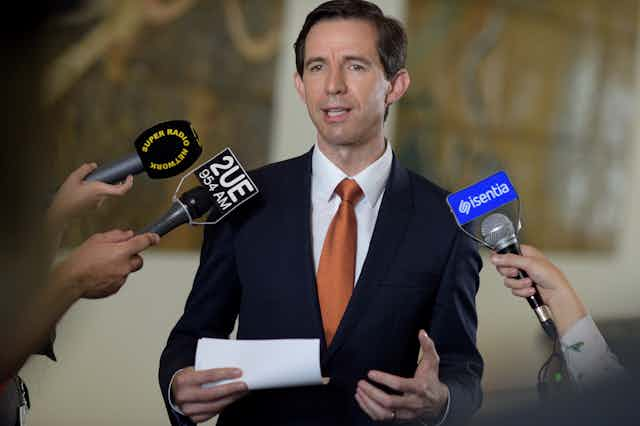The school funding wars are set to erupt again when federal, state and territory education ministers meet in Adelaide on Friday.
Federal education minister Simon Birmingham will use the Education Council meeting to argue for a new post-2017 federal funding model to replace the current “Gonski model” established under Labor.
Birmingham came out with guns blazing on Thursday, arguing current arrangements are inequitable, overly complex and represent a “corruption” of the ideals set out in the 2011 Gonski Report.
The Coalition wants its new model to be needs-based and nationally consistent, but is also offering much less cash than the Gonski model, and wants to attach a range of new conditions to how the money can be spent.
This “less cash, more caveats” model is a hard sell, and states and territories are ready for a fight – especially powerful states such as New South Wales that remain ardent supporters of the Gonski model.
The current funding mess
The Coalition is absolutely right in suggesting the ideals guiding the Gonski school funding reforms have been corrupted.
The Gonski report was designed to clean up Australia’s opaque and complex system of school funding and address significant inequalities by establishing a new needs-based funding model.
The report made a compelling argument to introduce a “base rate” level of funding per student, known as the Schooling Resource Standard (SRS), with extra loadings on top based on a number of equity categories.
The model Labor introduced did reflect this core structure, but then messy politics got in the way at the point of implementation.
In order to convince states and territories to sign on to the reform, different deals were done with different jurisdictions, and Labor promised that no school would lose a dollar under the plan.
Instead of a needs-based model, therefore, the result was a perversion of the Gonski ideal – an inconsistent patchwork of approaches across the nation that protected the vested interests of non-government schools.
Federal government modelling has been used to argue that under the current system, schools with exactly the same demographics and equity needs receive different funding in different states and territories.
This is smart politics by the Coalition: turning Labor’s argument for equitable funding on its head by arguing Gonski is far from equitable.
Of course, as the opposition education spokeswoman, Tanya Plibersek, pointed out, it was under the Coalition (not Labor) that the final three states (Queensland, Western Australia and the Northern Territory) signed onto the Gonski reform, which further contributed to national inconsistency.
So the Coalition’s attempts to heap all the blame on Labor for the current state of funding incoherence reflects a strong case of selective memory.
Can the federal government produce ‘real’ needs-based funding?
Birmingham suggests the Coalition’s new model will “target need” and “treat states equitably”.
However, any truly needs-based model will invariably require a reduction in the already high levels of government funding provided to many elite non-government (Catholic and independent) schools.
This has been a thorn in the side of past Coalition and Labor governments, which have consistently caved to pressure from vested interests.
For example, well before Labor promised no school would lose a dollar, the Coalition did exactly the same thing in 2001 when it introduced its socioeconomic status (SES) model under Prime Minister John Howard.
Both sides of politics, therefore, are guilty of such fiscal populism, whereby no one “loses”, even though funding is supposed to be assigned according to need.
This is a classic tale of politics driving policy.
Such a position is also untenable in a time of contracting budgets, and growing social, economic and educational inequalities.
There is also the difficulty of trying to get national consistency within a federal system in which states and territories ultimately control schooling. As Birmingham himself noted:
States and territories will always be free under our Constitution to fund schools in their state or territory as they see fit.
In other words, while the federal government provides Gonski funding, states and territories each have different needs-based funding models, and remain the dominant funders of public schools.
So unless all states and territories adopt the same funding formulas, there will always be difference, no matter what the federal government does.
The policy and political challenges ahead
The warning by NSW education minister Adrian Piccoli – that any reduction in the federal funding NSW receives would mean “war” – speaks precisely to the policy and political challenges ahead.
Not only is developing a new funding policy a great challenge in itself, but seeking to enact that policy in a volatile political climate is a fraught undertaking.
The Education Council meeting will no doubt ignite the most recent battle in a long and protracted war over school funding – one that is seemingly without end.
Birmingham’s challenge is undoubtedly colossal. He is trying to achieve what no federal education minister has done before him – establish a truly national needs-based funding model – but with less money and more caveats.
The armies have gathered in Adelaide. The battle lines are drawn. We await for the dust to settle.

